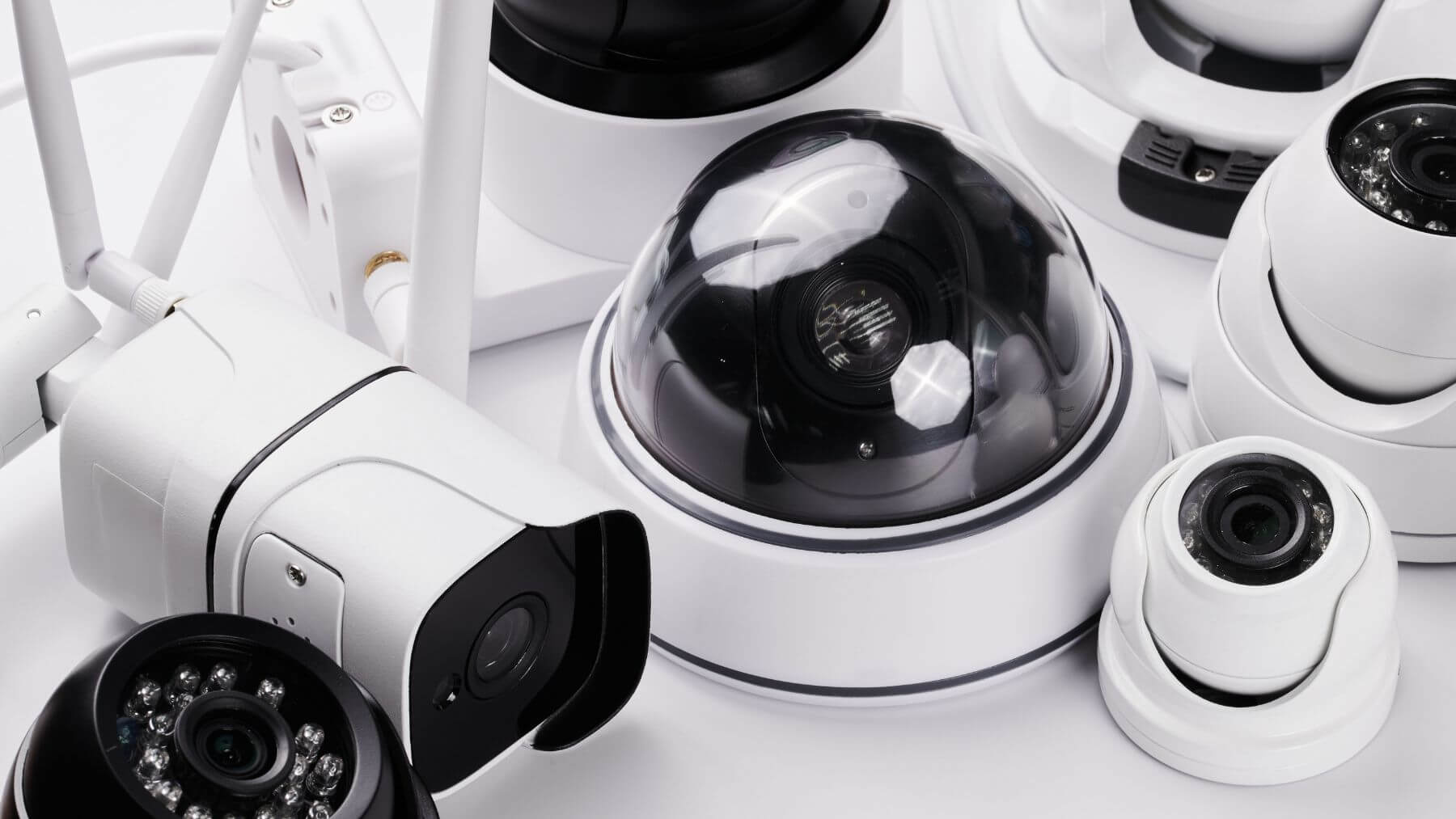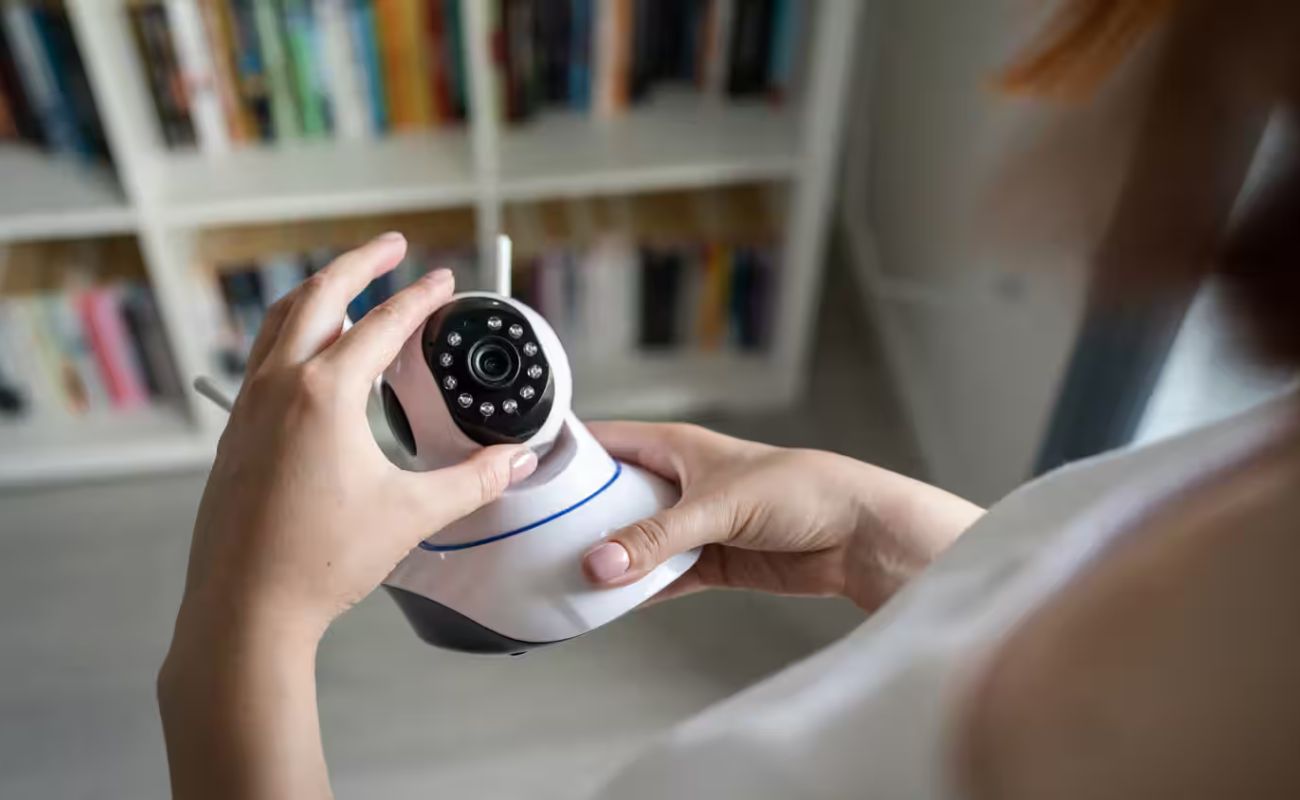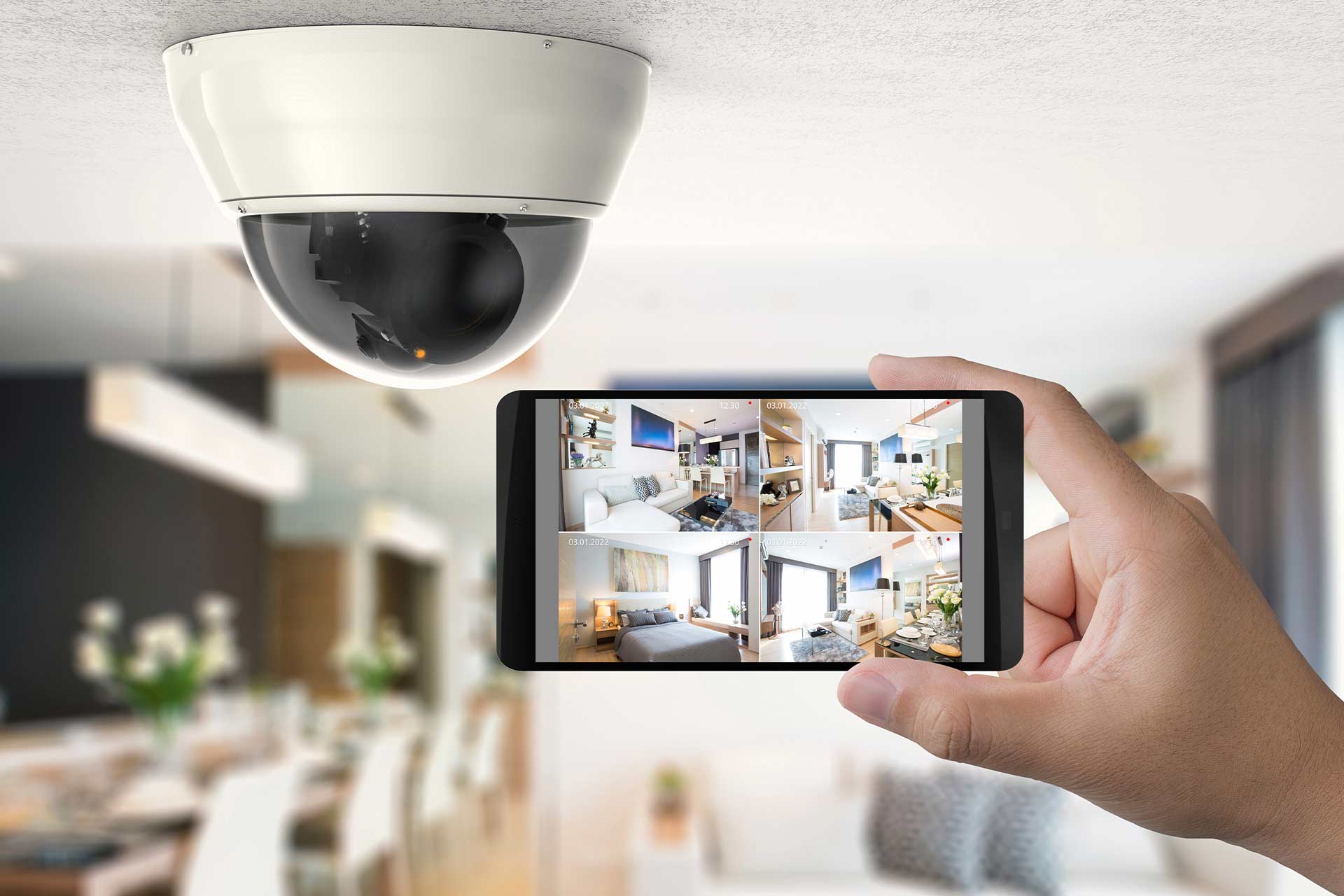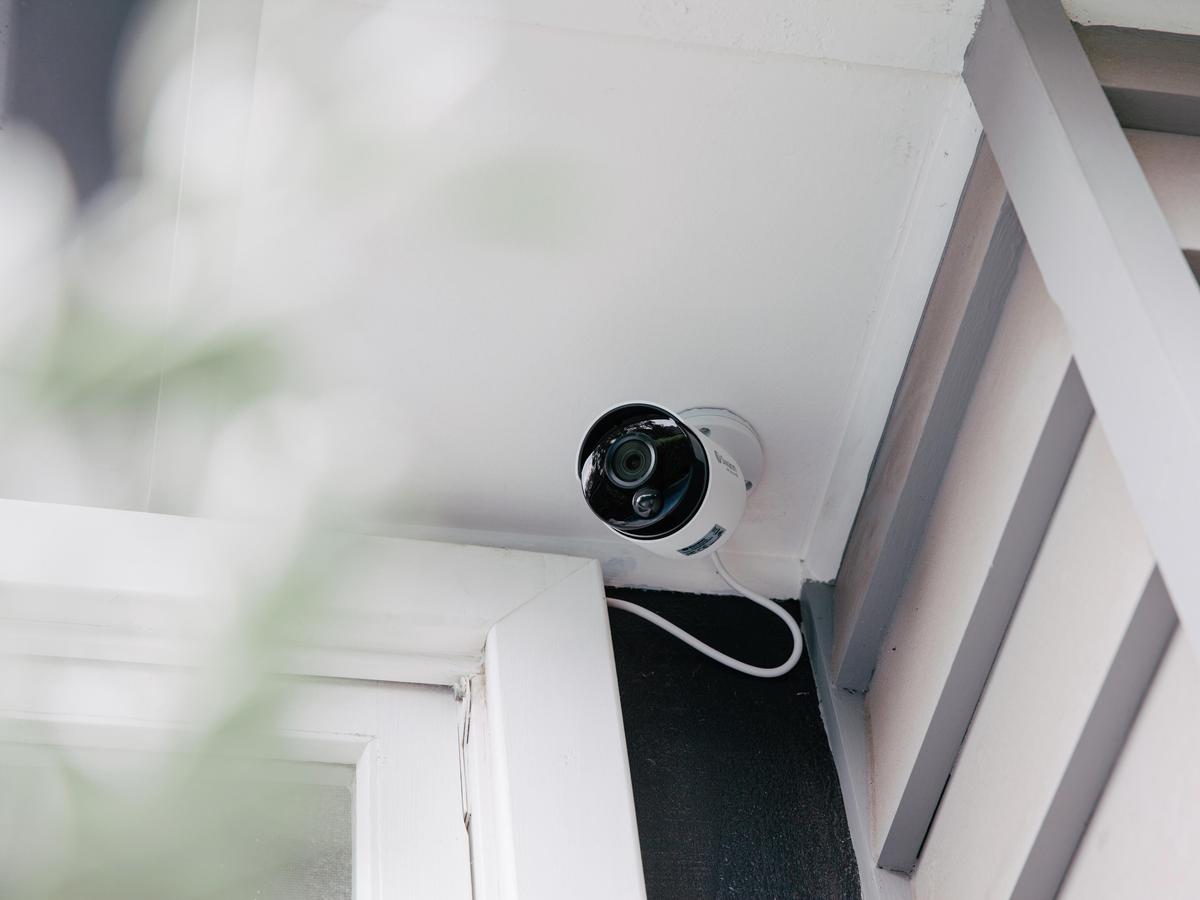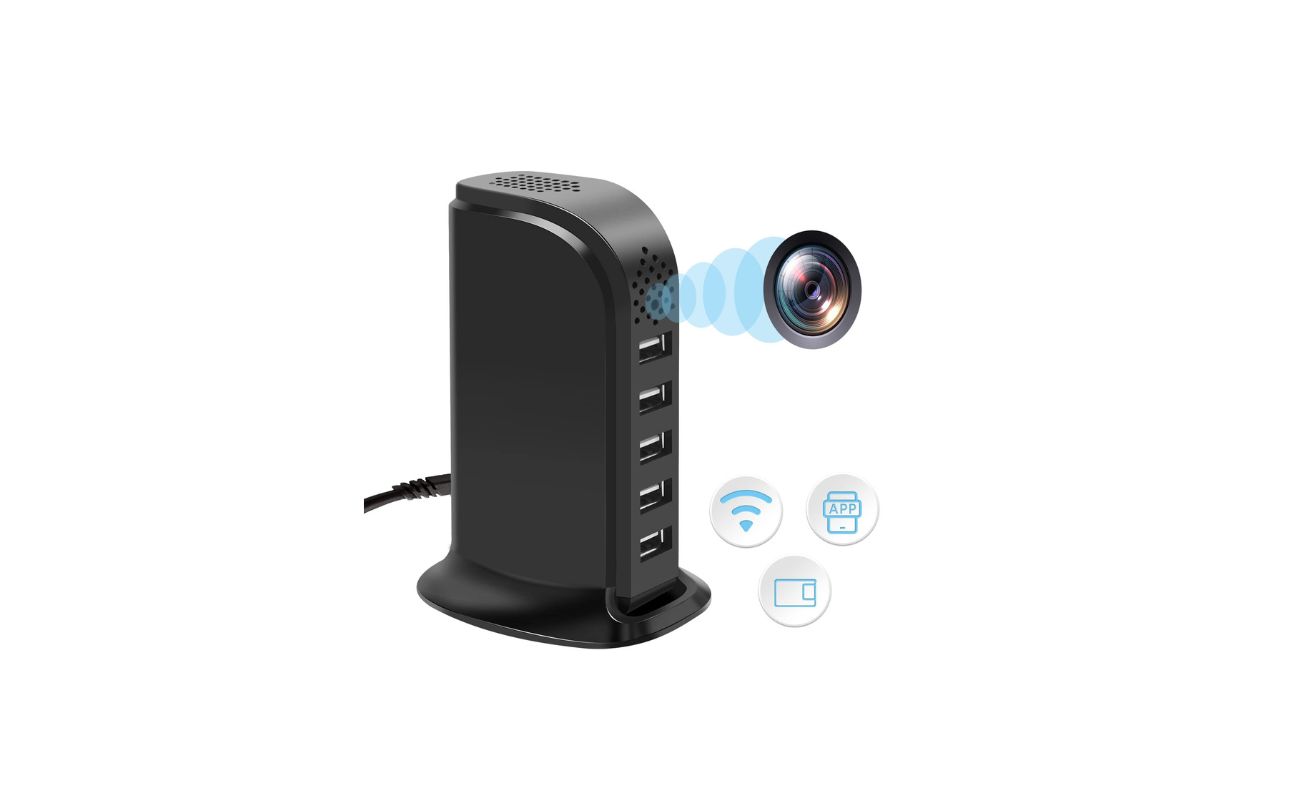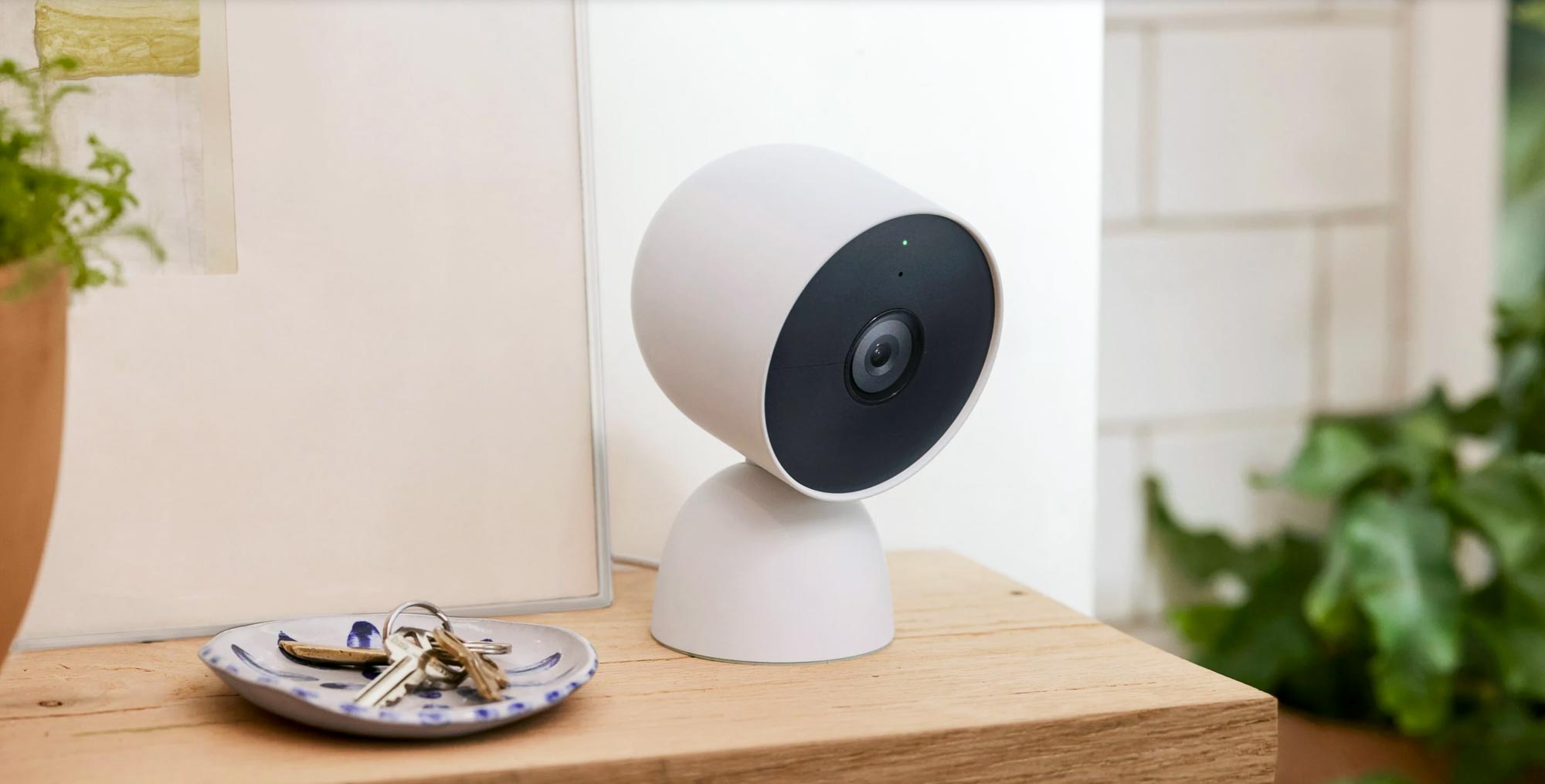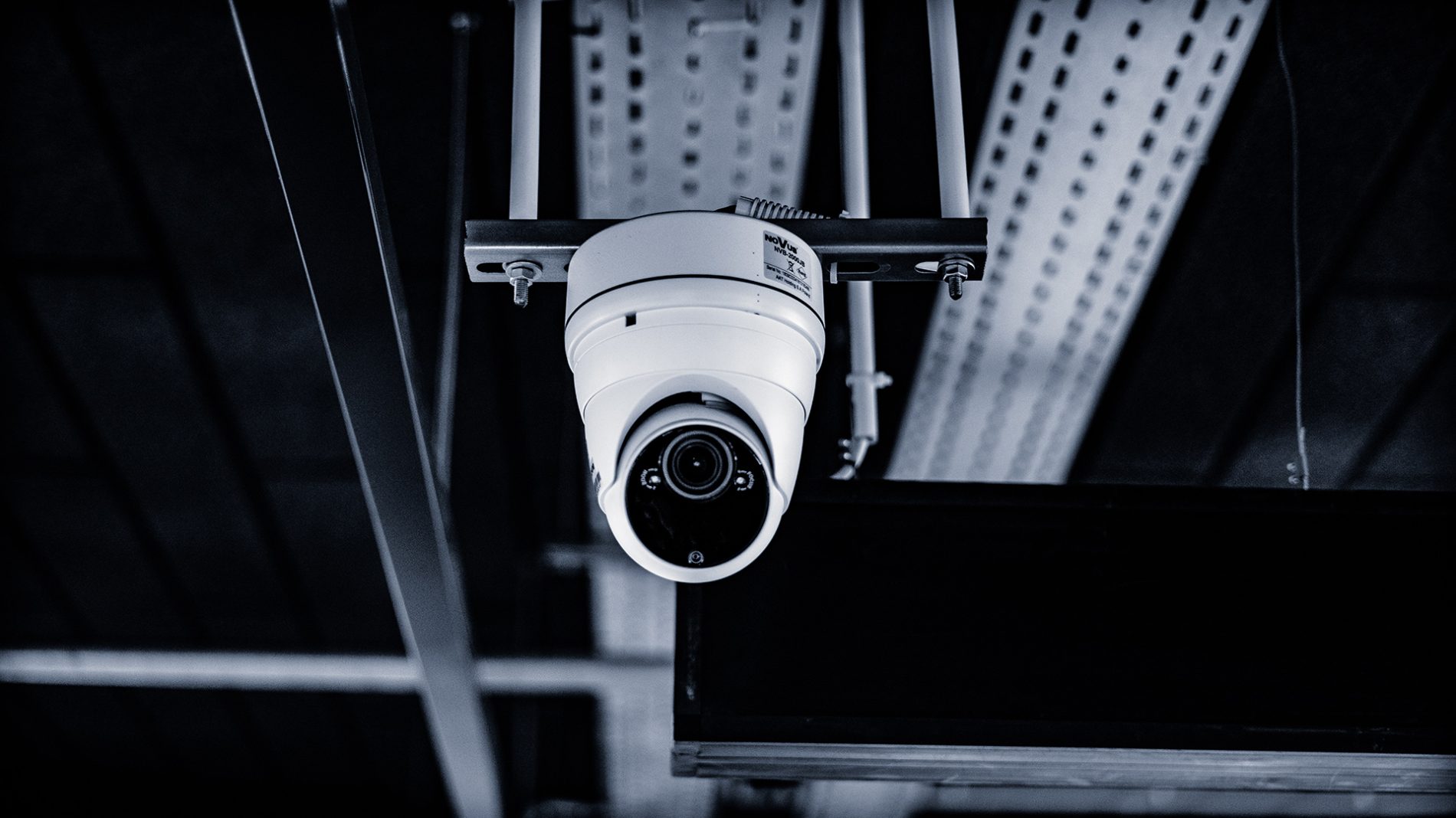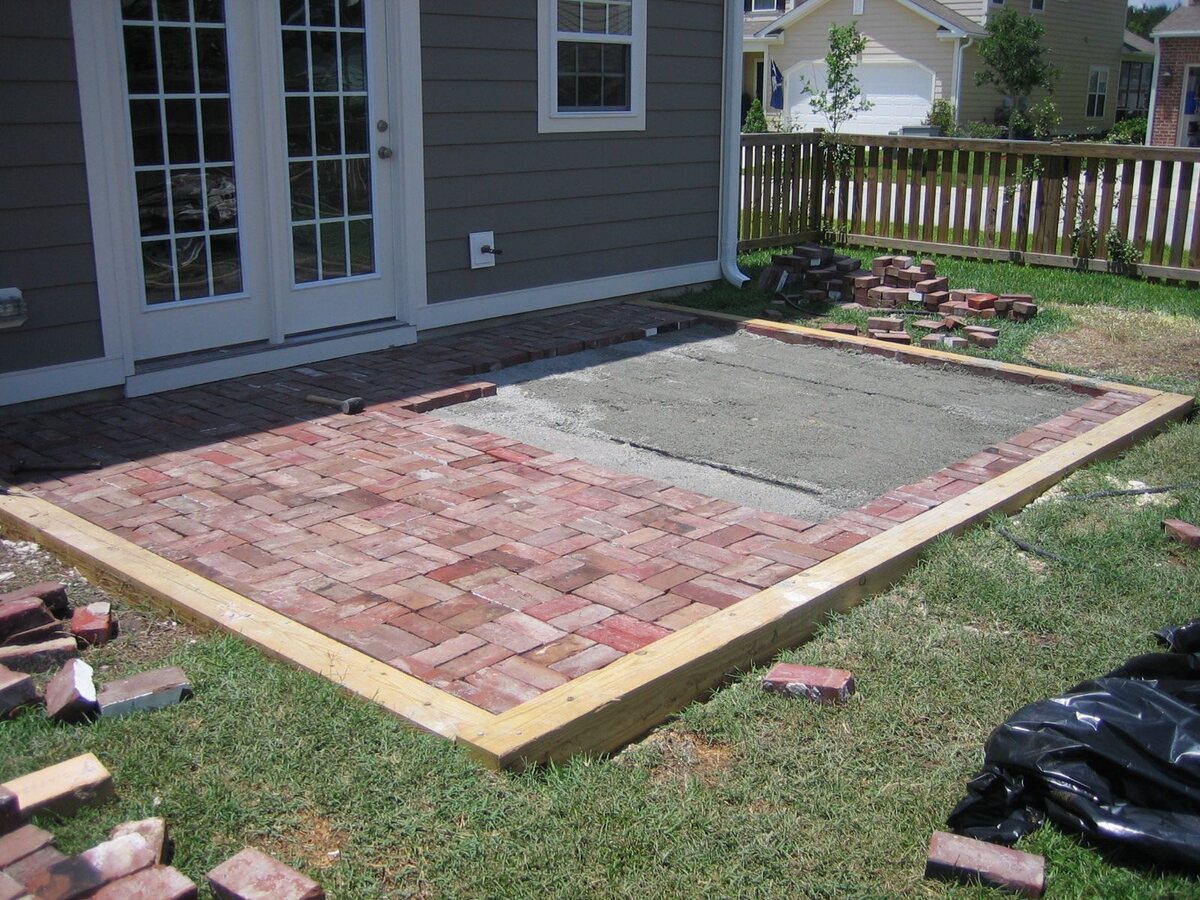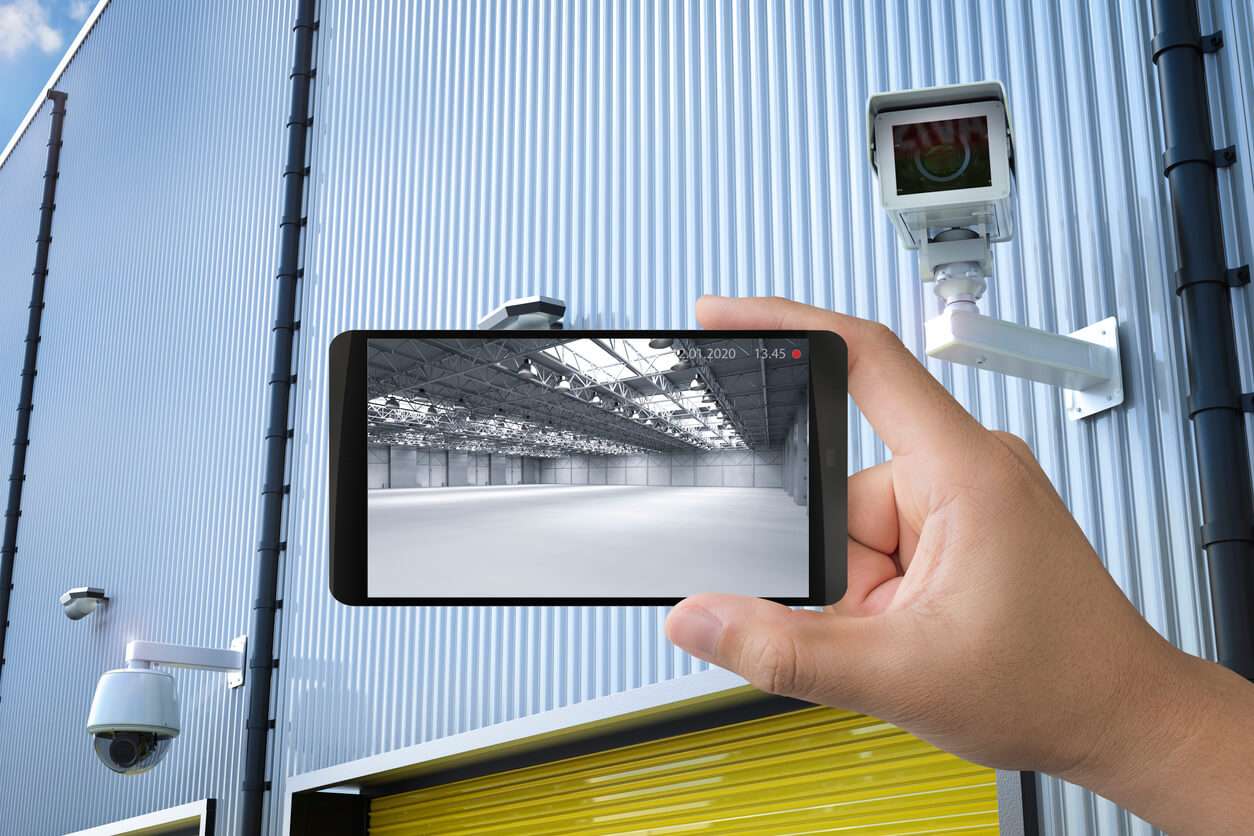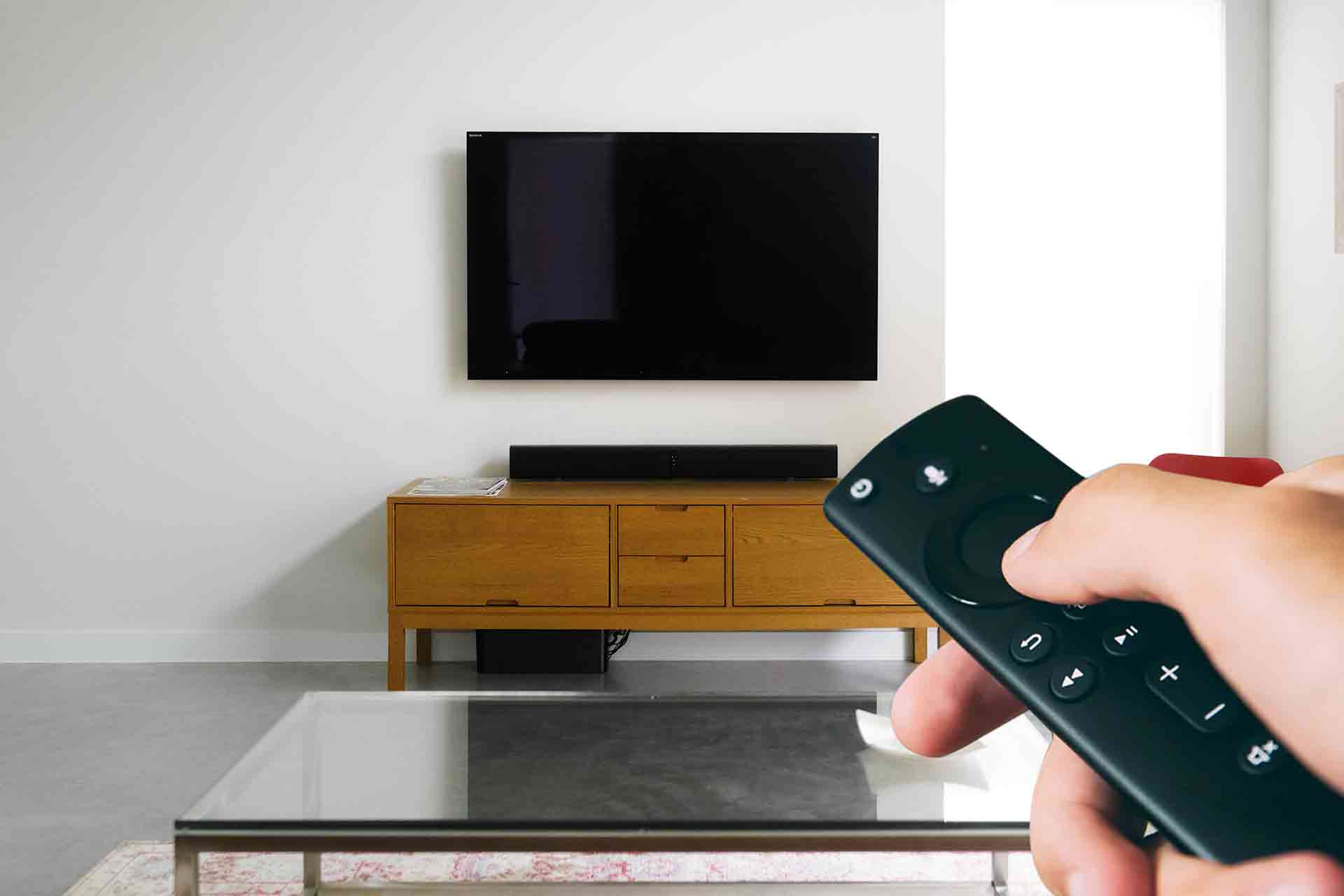Home>Home Security and Surveillance>How Many Cameras Do I Need For Home Security
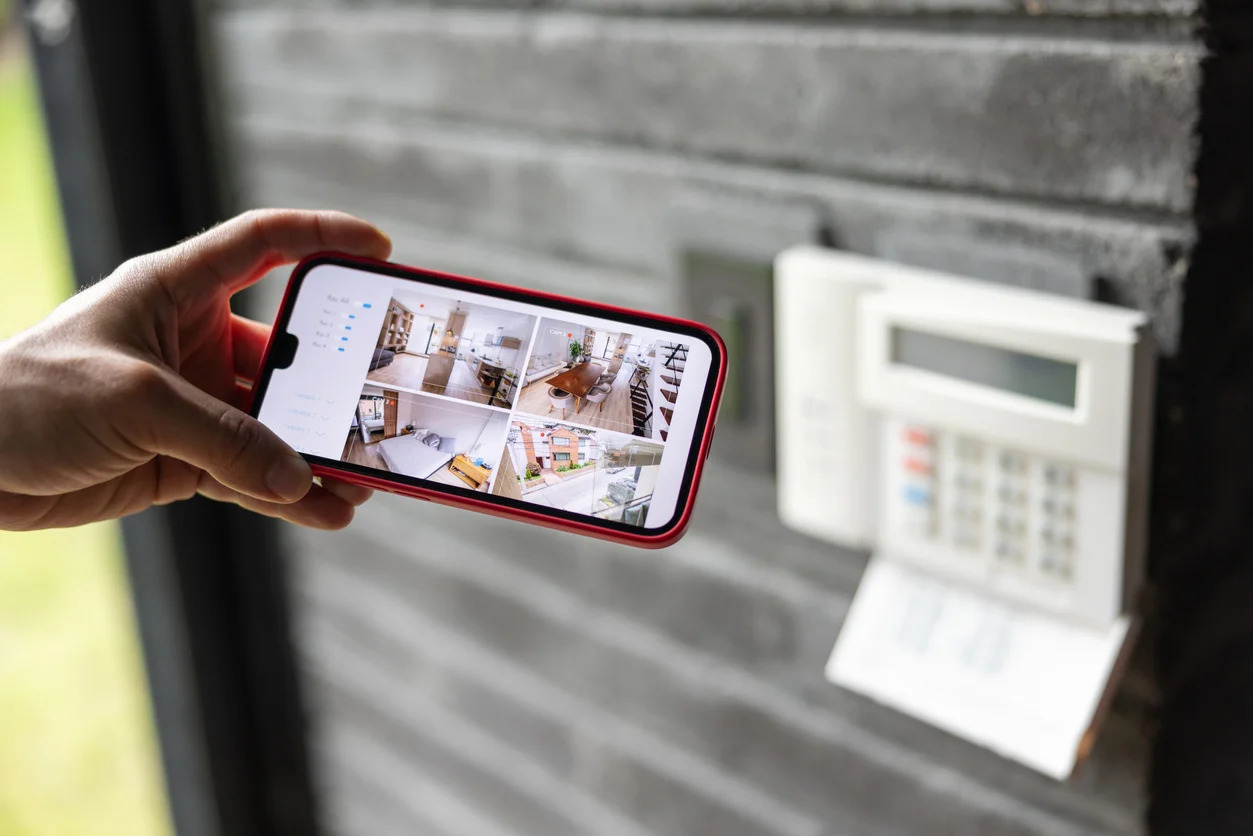

Home Security and Surveillance
How Many Cameras Do I Need For Home Security
Modified: March 6, 2024
Find out how many cameras you need for home security and surveillance. Discover the best solutions to protect your property and loved ones.
(Many of the links in this article redirect to a specific reviewed product. Your purchase of these products through affiliate links helps to generate commission for Storables.com, at no extra cost. Learn more)
Introduction
Home security is a top priority for homeowners, and one of the most effective ways to ensure the safety of your property and loved ones is by installing surveillance cameras. Security cameras not only act as a deterrent to potential intruders, but they also provide valuable evidence in the event of a break-in or any suspicious activity. With advancements in technology, there is a wide range of home security cameras available on the market today. However, one common question that homeowners often ask is, “how many cameras do I need for home security?” In this article, we will provide insight into this crucial question and guide you towards making an informed decision.
Key Takeaways:
- Installing home security cameras is crucial for deterring intruders and providing evidence in case of a break-in. Factors like property size, vulnerable entry points, and specific security concerns help determine the number of cameras needed.
- Consider a combination of wired and wireless cameras for flexible and comprehensive home security coverage. This hybrid approach offers stability, expandability, and customization to meet specific surveillance needs.
Read more: What Do I Need For Home Security Cameras
Importance of Home Security Cameras
Home security cameras play a vital role in keeping your property and your loved ones safe. Here are some key reasons why having home security cameras is important:
- Deterrence: The presence of visible security cameras on your property acts as a strong deterrent to potential burglars and intruders. Criminals are less likely to target a home that has visible surveillance cameras due to the risk of being caught on camera.
- Visual Evidence: In the unfortunate event of a break-in or vandalism, security cameras provide crucial visual evidence that can aid in identifying the perpetrators and assist law enforcement in their investigation. The footage captured can be used to catch and prosecute criminals.
- Remote Monitoring: Modern home security cameras allow you to monitor your property remotely through a smartphone, tablet, or computer. This gives you peace of mind and the ability to keep an eye on your home even when you are away. You can check live feeds, receive motion detection alerts, and even communicate with visitors through two-way audio.
- Fraud Protection: Home security cameras protect you against false claims and insurance fraud. In case of accidents or incidents on your property, having recorded footage can serve as evidence to prove the truth and protect you from fraudulent liability claims.
- Child and Pet Monitoring: Home security cameras are not only for detecting intruders. They can also be used to keep an eye on children and pets when you are not in the same room. This ensures their safety and allows you to quickly respond to any emergencies or unusual activities.
Overall, home security cameras provide a sense of security and peace of mind, allowing you to protect your property and loved ones. By investing in the right cameras and strategically placing them, you can significantly enhance the security of your home.
Factors to Consider When Deciding on the Number of Cameras
There are several factors to consider when determining the number of cameras you need for your home security setup. Each home is unique, and taking these factors into account will help you make an informed decision:
- Size and Layout of the Property: The size and layout of your property are key factors influencing the number of cameras required. A larger property with multiple entry points and sprawling outdoor areas will generally require more cameras to ensure comprehensive coverage. Assessing the layout of your property will help you identify vulnerable areas that need extra surveillance.
- Vulnerable Entry Points: Identify the vulnerable entry points of your home – those that are most likely to be targeted by intruders. This may include front and back doors, windows, and any other potential entry points. Installing cameras near these areas is crucial for capturing any suspicious activity and preventing break-ins.
- Desired Coverage Area: Consider how much coverage you want for your property. Do you want cameras to cover just the entry points or do you also want to monitor other areas such as the driveway or backyard? Determine the areas that you want to monitor and ensure that you have enough cameras to cover them effectively.
- Specific Security Concerns: Take into account any specific security concerns you may have. If you live in an area prone to crime or have experienced previous security incidents, you may want to install more cameras to ensure comprehensive surveillance.
- Camera Technology and Features: Different camera technologies offer various features that can affect the coverage area and the number of cameras needed. For example, wide-angle lenses provide a broader field of view, reducing the need for multiple cameras in a single area. PTZ (Pan-Tilt-Zoom) cameras can cover a larger area but may require additional cameras for specific angles. Consider the capabilities and limitations of the cameras you are considering when determining the number needed.
By carefully considering these factors, you can determine the appropriate number of cameras needed to ensure comprehensive coverage of your property and address your specific security concerns. It is always recommended to consult with a professional or a reputable security company who can provide personalized advice based on your unique requirements.
Size and Layout of the Property
The size and layout of your property are important considerations when determining the number of security cameras you need to effectively monitor your home. Here are some factors to keep in mind:
- Outdoor Areas: Consider the size and layout of your outdoor areas, including the front yard, backyard, and any side yards or entrances. If you have a large property with extensive outdoor space, you will likely need more cameras to adequately cover the entire area. Additionally, if you have multiple buildings or structures on your property, such as a detached garage or a pool house, you may need cameras to monitor those areas as well.
- Indoor Spaces: Evaluate the size and layout of your indoor spaces, such as hallways, stairwells, and individual rooms. Determine which areas you consider to be high-priority for monitoring, such as the main entryway or common areas where valuable belongings are kept.
- Unique Architectural Features: Take into account any unique architectural features that may impact camera placement. For example, if your property has multiple levels, balconies, or large windows, you may need additional cameras to ensure that these areas are adequately covered.
- Blind Spots and Obstacles: Identify any potential blind spots or obstacles that could hinder camera coverage. This could include large trees, bushes, or walls that obstruct the line of sight. Make sure that you account for these obstacles and adjust the number and placement of cameras accordingly.
- Camera Field of View: Consider the field of view offered by the cameras you are considering. Some cameras have a wider angle, allowing them to capture a larger area. This means you may need fewer cameras to cover a given space. However, keep in mind that wide-angle lenses may sacrifice detail and may not be suitable for certain scenarios.
By taking into account the size and layout of your property, you can determine the number of cameras needed to provide comprehensive coverage. It’s essential to strike a balance between ensuring sufficient coverage and avoiding unnecessary redundancy. If you’re unsure about the placement or number of cameras required, consulting with a professional security provider can be invaluable in designing a system that meets your specific needs.
Vulnerable Entry Points
When setting up a home security camera system, it’s crucial to identify and prioritize the vulnerable entry points of your property. By focusing on these areas, you can ensure that you have adequate coverage and surveillance where it matters most. Here are some common vulnerable entry points to consider:
- Front and Back Doors: The front and back doors are typically the main entry points for potential intruders. It is recommended to have cameras positioned to capture any activity at these entry points. Consider placing cameras at eye level or slightly above, aiming towards the entrances to capture clear facial recognition.
- Windows: Windows are another common entry point for burglars. Install cameras near ground-level windows, basement windows, or any windows that are easily accessible. Ensure that the cameras have a view that covers both the window and the surrounding area.
- Garage: If you have an attached or detached garage, it’s important to consider it as a potential vulnerability. Place cameras near the garage entrance and any windows to monitor for any suspicious activity or potential break-ins.
- Side Entrances: Side entrances, such as sliding glass doors, patio doors, or side gates, can often be targeted by intruders due to reduced visibility. Make sure to install cameras near these entry points to capture any unauthorized access effectively.
- Basements: Whether you use your basement for storage or living space, it’s important to secure it. Install cameras near basement entrances or windows to monitor for any unauthorized access or suspicious activity.
- Other Access Points: Depending on the layout of your property, there may be additional vulnerable entry points, such as balconies, fire escapes, or even access points from neighboring properties. Take the time to assess these areas and determine if they require camera coverage.
By identifying and prioritizing these vulnerable entry points, you can ensure that you have adequate camera coverage to monitor and deter any potential intruders. Remember to position the cameras in a way that provides a clear view of the entry points and consider utilizing features such as motion detection and night vision to enhance the cameras’ effectiveness.
Desired Coverage Area
When determining the number of security cameras needed for your home, it’s important to consider the desired coverage area. This refers to the specific areas of your property that you want to monitor and capture on camera. By identifying and prioritizing these areas, you can ensure that you have comprehensive surveillance where it matters most. Here are some key factors to consider when determining the desired coverage area:
- Main Entry Points: Start by assessing the main entry points of your home, such as the front door, back door, and any side entrances. These areas are of utmost importance and should be covered by cameras to capture any potential break-ins or suspicious activity.
- Outdoor Spaces: Consider the outdoor spaces that you want to include in your desired coverage area. This might include the front yard, backyard, garden, or other outdoor areas where valuable belongings or vehicles are stored. Determine whether you want cameras to cover these areas and ensure you have adequate camera placement to capture any potential intrusions or vandalism.
- Interior Spaces: Assess which interior spaces of your home you want to include in the desired coverage area. This could be areas such as the living room, kitchen, or bedrooms, depending on your specific security concerns. Consider the layout of your home and prioritize rooms or areas that contain valuable items or serve as common gathering spaces.
- Secondary Access Points: Apart from the main entry points, identify any secondary access points that you want to monitor. This might include basement entrances, garage accesses, or other areas that can be easily overlooked but can be potential entry points for intruders.
- Specific Security Concerns: Take into account any specific security concerns you might have. For example, if you’re concerned about package theft, you might want to include areas near the mailbox or the front porch in your desired coverage area. If you have children or pets, you might want to include areas where they spend a significant amount of time.
By considering these factors and determining your desired coverage area, you can better understand the number of cameras needed to effectively monitor your property. Keep in mind that it’s essential to strike a balance between comprehensive coverage and practicality. Installing cameras strategically in key areas can help ensure that you have a clear view of the most important spaces while avoiding excessive redundancy or unnecessary coverage.
Specific Security Concerns
When deciding on the number of security cameras for your home, it’s important to take into account any specific security concerns that you may have. These concerns can vary from person to person and may influence the areas you want to monitor and the number of cameras needed. Here are some common specific security concerns to consider:
- Neighborhood Crime Rate: If you live in an area with a higher crime rate or have experienced incidents in the past, you may want to increase the number of cameras to ensure comprehensive surveillance. This can help provide a higher level of deterrence and enhance your overall security.
- Valuable Belongings: If you have expensive or valuable belongings in your home, such as jewelry, electronics, or artwork, you may want to prioritize monitoring the areas where these items are kept. This could include installing cameras in rooms or areas where these belongings are stored, such as a home office or a vault.
- Personal Safety Concerns: If you have personal safety concerns for yourself, your family members, or even your pets, you may want to increase surveillance in certain areas. For example, if you have elderly family members, you may want to monitor areas where they spend time to ensure their well-being and safety.
- Home Business: If you run a home-based business, you may have additional security concerns. Monitoring areas such as an office, workshop, or inventory storage room may be necessary to protect your business assets and sensitive information.
- Remote Properties: If you have a vacation home or any remote properties that you want to monitor, consider installing cameras to keep an eye on these spaces. This can help ensure that your secondary properties remain secure, even when you’re not physically present.
- Privacy Concerns: While the goal of security cameras is to enhance safety, it’s important to consider any potential privacy concerns. You may want to avoid installing cameras in areas where privacy may be compromised, such as bedrooms or bathrooms.
By addressing your specific security concerns, you can tailor your home security camera system to meet your unique needs. This will provide you with a higher level of peace of mind and confidence in the overall security of your home.
Consider the layout of your home and the areas you want to monitor. A good rule of thumb is to have a camera at each entry point and in main living areas. This will provide comprehensive coverage for your home security.
Types of Cameras to Consider
When choosing security cameras for your home, it’s essential to understand the different types available and their features. Each type of camera has its advantages and is suited for different situations. Here are some common types of cameras to consider:
- Fixed Dome Cameras: These cameras have a dome-shaped casing and are commonly used for indoor surveillance. They are discreet and blend well with the surroundings. The dome casing also makes it difficult for intruders to determine the direction the camera is facing.
- Bullet Cameras: Bullet cameras are known for their long, cylindrical shape. They are versatile and can be used for both indoor and outdoor surveillance. Bullet cameras often come with infrared (IR) capabilities for nighttime monitoring and are typically weatherproof, making them suitable for outdoor use.
- PTZ (Pan-Tilt-Zoom) Cameras: PTZ cameras can pan, tilt, and zoom, allowing you to adjust the camera’s position and focus remotely. They offer a wide coverage area and are ideal for large properties or areas that require frequent monitoring of different angles. PTZ cameras can be controlled manually or set to automatically track movement.
- Wireless Cameras: As the name suggests, wireless cameras do not require a physical connection to transmit video signals. They communicate with the recording device via Wi-Fi, making installation and setup easier. Wireless cameras are a great option when running cables is impractical or inconvenient.
- Wired Cameras: Wired cameras, on the other hand, require a physical connection to the recording device using cables. This provides a reliable and stable connection and eliminates potential signal interference. Wired cameras are generally more suitable for long-term installations and areas where consistent power supply is available.
- Outdoor Cameras: Outdoor cameras are designed specifically to withstand harsh weather conditions and protect against vandalism. They are typically weatherproof and may have additional features such as vandal-proof casing or infrared night vision capabilities.
- Indoor Cameras: Indoor cameras are designed for indoor use and are often more compact and discreet. They can be easily mounted on walls or placed on shelves to monitor specific areas and activities inside your home.
- Smart Cameras: Smart cameras are integrated with advanced features and technologies. They may offer facial recognition, motion detection, two-way audio, and the ability to integrate with smart home systems. Smart cameras can be controlled and monitored remotely using a smartphone or other smart devices.
When choosing the types of cameras for your home security system, consider your specific needs, the areas you want to monitor, and your budget. It is also advisable to consult with a security professional or reputable provider to ensure you choose the right cameras for your unique requirements.
Single Camera Option
If you are looking for a simple and budget-friendly home security solution, a single camera option may be suitable for your needs. While having just one camera may not provide comprehensive coverage of your entire property, it can still offer valuable surveillance and peace of mind. Here are some key considerations for a single camera option:
- Strategic Placement: With a single camera, it’s crucial to strategically place it in an area that provides the most coverage. Consider installing it near the main entrance or another vulnerable entry point to capture any potential break-ins or suspicious activity. Placing the camera at an elevated position can provide a better field of view.
- Wide-Angle Lens: Opt for a camera with a wide-angle or panoramic lens to maximize the coverage area. This will allow the camera to capture a larger field of view, reducing the chances of any blind spots. Ensure that the camera has a high-resolution image quality for clear and detailed footage.
- Motion Detection: Look for a camera with motion detection capabilities. This feature triggers recording or alerts when the camera detects movement within its field of view. It helps reduce unnecessary recording and saves storage space. Additionally, you can set up notifications to be alerted when motion is detected, keeping you informed of any activity at your home.
- Night Vision: Consider a camera with built-in infrared (IR) or low-light vision capabilities. This enables the camera to capture clear footage in low-light conditions or even complete darkness, providing around-the-clock surveillance.
- Remote Access: Choose a camera that offers remote access capabilities. This allows you to view live feeds, playback recorded footage, and receive alerts from anywhere using a smartphone, tablet, or computer. The ability to remotely monitor your home provides peace of mind, even when you’re away.
- Video Storage: Determine how the camera stores the recorded footage. Some cameras offer local storage options such as an SD card, while others may require a subscription to cloud storage services. Consider the storage capacity and choose an option that aligns with your preferences and needs.
- Integration: If you have a smart home system or other smart devices, ensure that the camera is compatible with your existing setup. Integration allows for seamless control and automation, enhancing the overall security and convenience of your home.
A single camera option can be an affordable and straightforward choice for homeowners who want to enhance their home security. While it may not provide extensive coverage, it can still offer valuable surveillance for a specific area or entry point. It’s important to carefully consider the camera’s features and functionalities to ensure it meets your specific requirements and provides the level of security you desire.
Multiple Camera Options
If you are looking for a more comprehensive home security solution, multiple camera options are worth considering. Having multiple cameras strategically placed around your property can provide enhanced coverage and surveillance. Here are some key benefits and considerations of opting for multiple cameras:
- Comprehensive Coverage: Multiple cameras allow you to cover a larger area of your property, including both indoor and outdoor spaces. By strategically positioning the cameras, you can minimize blind spots and ensure that every vulnerable area is monitored. This provides a higher level of protection against potential intruders and other security risks.
- Customizable Placement: With multiple camera options, you have the flexibility to customize their placement according to the unique layout of your property. Consider the specific areas you want to monitor, such as entry points, driveways, or backyard, and position the cameras accordingly to have optimal coverage.
- Specialized Cameras: You can choose to have different types of cameras to fulfill different monitoring needs. For example, you can opt for bullet cameras to cover outdoor areas, dome cameras for indoor spaces, or PTZ cameras for larger areas that require flexible monitoring angles. This allows you to address specific security concerns and optimize camera functionality based on different environments.
- Reduced Blind Spots: Multiple cameras help eliminate blind spots by providing overlapping coverage. By ensuring that each camera’s field of view slightly overlaps with adjacent cameras, there is a seamless transition of surveillance between areas. This helps minimize the chances of an intruder going undetected due to a camera’s limited range.
- Camera Synchronization: Some security systems allow you to synchronize the cameras, providing simultaneous recording and playback across multiple devices. This allows you to monitor multiple camera feeds on a single screen, making it easier to keep an eye on your entire property at once.
- Increased Deterrence: The presence of multiple cameras is a strong visual deterrent for potential intruders. The more cameras they see, the higher the perceived risk and the likelihood of them choosing another target. Multiple cameras around your property send a clear message that your home is under surveillance and not an easy target for criminal activity.
- Remote Viewing: Having multiple cameras allows for more comprehensive remote viewing capabilities. Most security systems provide the ability to access live feeds and recorded footage from multiple cameras simultaneously, giving you a complete view of your property. This is especially beneficial when you are away from home and want to ensure everything is secure.
When considering multiple camera options, it’s important to plan and design your system carefully. Assess the specific areas you want to cover, the number of cameras needed for adequate surveillance, and the types of cameras that best suit those areas. It can be beneficial to consult with a security professional who can help you determine the optimal camera placement and configuration for your home security needs.
Wireless Cameras
Wireless security cameras have become increasingly popular due to their ease of installation, flexibility, and convenience. These cameras use Wi-Fi technology to transmit video and audio signals, eliminating the need for complex wiring. Here are some key benefits and considerations of using wireless cameras in your home security setup:
- Easy Installation: Wireless cameras are incredibly easy to install compared to their wired counterparts. As they do not require any physical connections, you can set them up in minutes. Simply mount the cameras in the desired locations, connect them to your Wi-Fi network, and they are ready to go. This makes them ideal for both homeowners and renters who may not want to undertake extensive wiring installations.
- Flexibility of Placement: With wireless cameras, you have greater flexibility in terms of camera placement. You can easily move and reposition the cameras as needed, without the constraints of wiring limitations. This allows you to optimize the camera angles and coverage areas, ensuring comprehensive surveillance of your property.
- Expandability: Wireless camera systems are highly scalable, allowing you to add more cameras to your setup over time. You can start with a few cameras and gradually expand to cover additional areas or address changing security needs. This flexibility eliminates the need for a complete overhaul of the entire system if you decide to add more cameras later on.
- Remote Monitoring: Wireless cameras offer the convenience of remote monitoring. Through a dedicated mobile app or web portal, you can access the live feeds from your cameras, view recorded footage, and receive instant notifications of any detected motion or security events. This allows you to keep an eye on your property from anywhere, providing peace of mind even when you are away.
- Minimal Cable Management: As wireless cameras do not require physical cables for video transmission, they offer a neat and clean installation with minimal cable management requirements. This eliminates the need for running wires through walls, which not only saves time and effort but also avoids any potential damage to the aesthetic appeal of your home.
- Power Source Considerations: While wireless cameras eliminate the need for video cables, they still require a power source. Most wireless cameras are powered either by batteries or by plugging them into a power outlet. It’s important to consider the power source options and battery life to ensure uninterrupted operation. Some wireless cameras also offer solar power options for increased sustainability.
- Signal Reliability: The reliability of wireless cameras depends on the strength and stability of the Wi-Fi signal in your home. If the Wi-Fi signal is weak or inconsistent, it can impact the performance of the cameras. Ensure that your Wi-Fi coverage is strong, especially in the areas where you plan to install the cameras.
Wireless cameras provide a convenient and flexible solution for home security. They offer easy installation, remote access, and the ability to expand your system as needed. However, it’s important to consider the power source, signal reliability, and overall network security when opting for wireless cameras. Evaluate your specific requirements and consult with a security professional to choose the right wireless cameras that best suit your home security needs.
Wired Cameras
Wired security cameras have been a reliable and widely used option for home surveillance for many years. These cameras require physical connections with cables to transmit video and audio signals to the recording device. Here are some key benefits and considerations of using wired cameras in your home security setup:
- Stable and Reliable Connection: With wired cameras, you can expect a stable and uninterrupted connection for video transmission. The physical connection ensures that there is minimal interference or loss of signal, providing clear and consistent video quality. This makes wired cameras a dependable choice for continuous surveillance.
- Power over Ethernet (PoE) Capability: Many wired cameras feature Power over Ethernet (PoE) capability, allowing them to receive power through the same network cable used for video transmission. This eliminates the need for separate power cables and simplifies the installation process. PoE also ensures a centralized power source, making it easier to manage and maintain the cameras.
- No Wi-Fi Interference: Since wired cameras do not rely on Wi-Fi signals for data transmission, they are not affected by potential interference from other wireless devices or a crowded Wi-Fi network. This ensures a robust and consistent connection, providing reliable surveillance without the concern of signal disruptions.
- Unlimited Recording Capacity: Wired cameras typically connect to a network video recorder (NVR) or a digital video recorder (DVR) that records and stores the footage. This allows for ample storage capacity, making it ideal for long-term recording. The recording capacity is only limited by the storage capacity of the NVR or DVR, which can be expanded as needed.
- Long-Distance Coverage: Wired cameras are suitable for large properties or areas that require long-distance coverage. The cables used for connection allow for longer transmission distances without any degradation in video quality. This makes wired cameras a preferred choice for monitoring expansive outdoor areas or properties with multiple buildings.
- Minimal Maintenance: Once installed, wired cameras require minimal maintenance. Since they do not rely on batteries, there is no need for regular battery replacement or recharging. The wired connection ensures a constant power supply. However, periodic cleaning of the camera lens and cables may be required to maintain optimal performance.
- Security: Wired cameras offer an added layer of security as they are not susceptible to hacking or interference from external wireless signals. This makes them a preferred choice for homeowners concerned about the privacy and security of their surveillance system.
Wired cameras provide a reliable and robust solution for home security. They offer stable connections, unlimited recording capacity, and are unaffected by Wi-Fi interference. However, wired cameras require a more involved installation process due to cable routing and may not be as flexible in terms of camera placement. Consider your specific requirements and consult with a security professional to determine if wired cameras are the right choice for your home security needs.
Combination of Wired and Wireless Cameras
Utilizing a combination of wired and wireless cameras can provide a flexible and comprehensive home security solution. This hybrid approach allows you to leverage the advantages of both types of cameras to meet your specific surveillance needs. Here are some key benefits and considerations of using a combination of wired and wireless cameras in your home security setup:
- Flexibility in Placement: Wireless cameras offer the advantage of flexibility in camera placement. They can be easily moved and repositioned, making them ideal for monitoring temporary or changing areas. This flexibility allows you to adapt your camera setup to evolving security requirements or address specific monitoring needs.
- Stable and Reliable Connection: Wired cameras provide a stable and reliable connection for seamless video transmission. They are unaffected by potential interference or signal loss, ensuring consistent surveillance performance. This makes wired cameras an excellent choice for critical areas where a consistent and uninterrupted connection is essential.
- Expandability: A combination of wired and wireless cameras offers the advantage of expandability. You can start with a smaller set of cameras and gradually add more as needed. This scalability ensures that you can customize your surveillance system to cover additional areas or address changing security priorities over time.
- Extended Coverage: Wired cameras are well-suited for areas that require long-distance coverage, such as expansive outdoor spaces or detached buildings. By strategically placing wired cameras in these locations, you ensure comprehensive surveillance coverage. Wireless cameras can then be used to monitor more flexible or hard-to-reach areas where a wired connection may be impractical.
- Remote Monitoring: Both wired and wireless cameras can offer remote monitoring capabilities, allowing you to access live feeds and recorded footage from anywhere. With a combination of cameras, you can have a unified monitoring interface that provides a complete view of your property, whether it be through a mobile app or web portal.
- Power Source Considerations: Wired cameras require a physical power source, while wireless cameras can be powered either through cables or batteries. It’s important to consider the power source options and battery life when deciding on the placement and reliability of each camera. This ensures continuous surveillance and minimizes the risk of power failure.
- Customization and Optimization: A combination of wired and wireless cameras allows for customization and optimization of the surveillance system. You can determine which areas require a more permanent and reliable connection with wired cameras and which areas need the flexibility and ease of installation provided by wireless cameras. This allows you to achieve a balanced and efficient camera setup.
By combining the strengths of both wired and wireless cameras, you can design a comprehensive and adaptable home security system. The placement of each type of camera should be carefully planned and tailored to your specific security requirements and property layout. Consider consulting with a security professional to ensure that the combination of wired and wireless cameras aligns with your desired level of security and surveillance coverage.
Conclusion
When it comes to home security, surveillance cameras play a crucial role in deterring potential intruders and providing peace of mind. The number and type of cameras you choose will depend on various factors, including the size and layout of your property, vulnerable entry points, desired coverage area, specific security concerns, and your budget.
A single camera option can be a cost-effective choice, providing surveillance for a specific area or entry point. However, for more comprehensive coverage, multiple camera options offer enhanced protection by monitoring various areas of your property simultaneously.
Wireless cameras provide flexibility and easy installation, making them ideal for those who prefer a simpler setup. They are suitable for monitoring smaller areas or locations where running cables may be challenging. On the other hand, wired cameras offer a stable connection, unlimited recording capacity, and long-distance coverage, making them ideal for larger properties and critical areas.
A combination of wired and wireless cameras can provide the best of both worlds, allowing you to leverage the advantages of each type. This hybrid approach offers flexibility, expandability, and customization, ensuring comprehensive surveillance coverage for your home.
Ultimately, selecting the right number and type of cameras for your home security system requires careful consideration of your specific needs, property layout, and security concerns. It’s recommended to consult with a professional security provider who can assess your requirements and help design a customized system that provides optimum coverage and peace of mind.
Investing in home security cameras enhances the safety and protection of your property, giving you the ability to monitor and respond to potential threats in real time. Whether you choose a single camera, multiple cameras, wired, wireless, or a combination, prioritizing the security of your home is always a wise decision.
Frequently Asked Questions about How Many Cameras Do I Need For Home Security
Was this page helpful?
At Storables.com, we guarantee accurate and reliable information. Our content, validated by Expert Board Contributors, is crafted following stringent Editorial Policies. We're committed to providing you with well-researched, expert-backed insights for all your informational needs.
